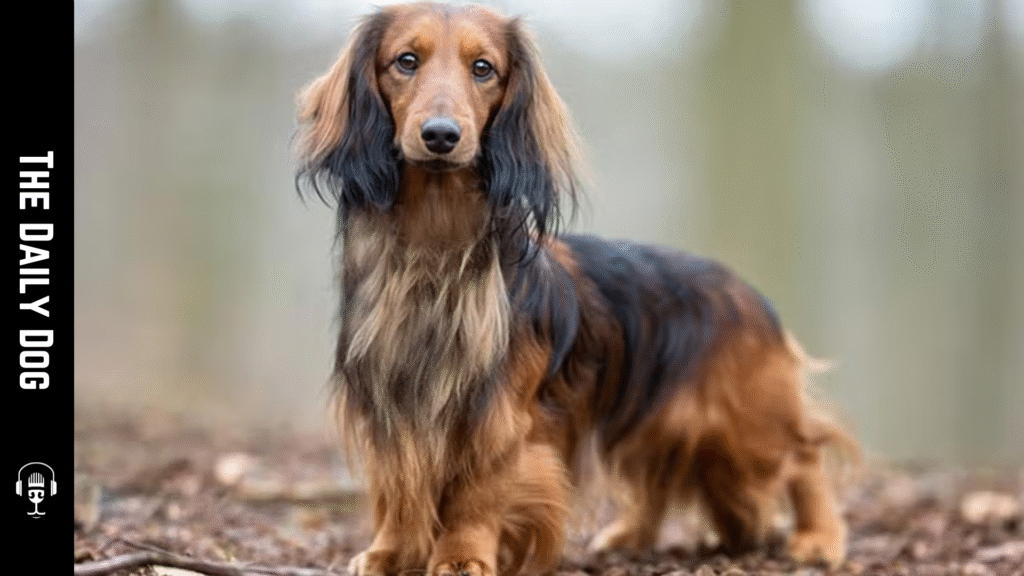When a Dachshund strides into a room, they bring a distinctive blend of charm, tenacity, and playful energy that instantly captures hearts. With their long bodies, short legs, and soulful eyes, these small dogs leave a big impression. Despite their size, Dachshunds carry a fearless, sometimes stubborn personality that has earned them a beloved place in many households. This post explores the breed’s history, temperament, health, care requirements, training tips, and ideal living situations, offering insights for current and prospective owners who want a strong, loving canine partner.
A rich history of resilience and charm Dachshunds trace their roots to Germany, where their name translates to “badger dog.” This brave lineage explains their distinctive silhouette and fearless temperament. Bred to hunt burrowing animals, Dachshunds exhibit remarkable courage, a stubborn streak, and an unwavering focus when they set their minds on a task. Over generations, breeders refined two coat varieties—smooth and longhaired, with a wirehaired option added later—each contributing to the breed’s unique look and temperament. The Dachshund’s history is not just about hunting prowess; it reveals a dog bred to adapt to challenging environments, a trait that remains evident in their energy and problem-solving instincts today.
Temperament: independence, loyalty, and playful mischief
Dachshunds are often described as a little dog with a big personality. They are highly alert, making them excellent watchdogs, but their boldness can translate into stubborn moments, especially if they feel challenged or bored. Many Dachshunds form strong bonds with a single person while still enjoying the company of the whole family. They relish interactive play, scent games, and problem-solving activities that stimulate their keen minds. A healthy Dachshund blends affectionate nature with a fearless streak, which can manifest as surprisingly spirited behavior if not properly channeled. Early socialization and ongoing mental stimulation help shape a well-rounded adult who is confident without becoming overly anxious or aggressive.
Health considerations and lifespan
Dachshunds typically live between 12 and 16 years, though individual longevity varies with genetics, care, and environment. A distinctive long spine makes them prone to back problems, notably intervertebral disc disease (IVDD). Preventive measures are essential: avoid high-impact activities, prevent jumping on and off furniture, and encourage controlled, low-impact exercise such as short walks and gentle play. Maintaining a healthy weight is crucial, as excess body weight increases spinal strain. Regular veterinary checkups, a balanced diet, and appropriate supplements recommended by a veterinarian can support joint and spinal health. Additionally, their ears require routine cleaning to prevent infections, and dental care should not be overlooked. Some Dachshunds may face skin or eye issues, so routine screening helps catch potential concerns early.
Coat varieties, grooming needs, and seasonal care
Dachshunds come in three coat types: smooth, longhaired, and wirehaired. Each variety has its own grooming needs:
- Smooth-haired: low-maintenance and easy to care for, requiring regular brushing to reduce shedding and occasional trimming.
- Longhaired: requires more frequent brushing to prevent mats and tangles, plus periodic baths to maintain coat health.
- Wirehaired: needs regular brushing and occasional professional grooming to maintain a wiry, weather-resistant coat.
All varieties benefit from routine ear cleaning and nail trimming. Seasonal care is also important; the coat type influences how a Dachshund handles temperature changes. Shorthaired dogs may seek warmth in colder weather, while longer coats provide extra insulation. Regardless of coat, a comfortable, climate-appropriate environment and regular physical activity are essential for well-being.
Exercise and training: channeling energy constructively
Despite their compact size, Dachshunds are lively and require regular physical activity and mental stimulation. Short daily walks combined with interactive games, scent work, and puzzle feeders help burn energy and prevent boredom. Because they are intelligent and sometimes stubborn, training should be patient, consistent, and positive. Positive reinforcement methods, treats, praise, and play, work best when paired with clear, consistent cues. Early socialization with people and other dogs reduces the risk of fear-based or reactive behaviors later on. Training sessions should be brief but frequent to align with their short attention spans. Crate training can offer a secure space and aid house training, provided it is introduced positively. Remember that Dachshunds love to investigate, so supervision during play is important to prevent unwanted bolting or escaping behavior in new environments.
Living arrangements that suit a Dachshund Dachshunds adapt well to a variety of living situations, including apartments and houses, as long as their exercise and mental needs are met. Because they can be vocal watchdogs, proper social exposure helps mitigate excessive barking. A securely fenced yard satisfies their curiosity, but many Dachshunds are adept at squeezing through small gaps, so attention to fencing and gates is essential. Prospective owners should plan for consistent daily routines, including structured playtime, training, and predictable meal times. For families with children, supervision and teaching gentle handling are important; many Dachshunds thrive with respectful, affectionate interactions and clear boundaries.
Nutrition, weight management, and dietary considerations
Feeding a Dachshund requires balancing energy needs with a watchful eye on weight. Obesity accelerates spinal strain and contributes to health issues. A veterinarian can recommend an appropriate daily portion and monitor weight, especially as activity levels evolve with age. High-quality dog foods that match life stage, puppy, adult, or senior, are recommended, with attention to appropriate calcium and phosphorus levels. Treats should be portion-controlled and used to reinforce positive training. Fresh water should always be available. If dental care is a concern, kibble formulations designed for dental health can complement brushing routines.
Choosing the right Dachshund for your home
When selecting a Dachshund, consider temperament, energy level, and health history. Some lines may display stronger prey drive or bark tendencies, while others may be more laid-back and people-oriented. Meeting the puppy’s or adult dog’s guardians and observing interactions with family members helps gauge compatibility. Reputable breeders and rescue organizations prioritize health testing and temperament screening, which can provide valuable insights into potential health risks and behavioral traits. For adopters, a shelter or rescue may offer temperament assessments that guide placement, ensuring a good fit for your household dynamics.
Caring for an aging Dachshund
As Dachshunds age, their needs evolve. They may require more frequent veterinary checkups, joint support, and adjusted activity levels to accommodate stiffness or arthritis. Providing a warm, supportive sleeping surface helps soothe joints, while continued mental engagement prevents cognitive decline. Shorter, gentler walks and easier access to favorite resting spots maintain quality of life. Regular dental care and ear hygiene remain important, as older dogs can become more susceptible to dental disease and ear infections. A proactive approach to aging ensures a Dachshund remains a cherished member of the family for years to come.
The Dachshund’s enduring appeal
What makes the Dachshund so endearing is more than their distinctive physique. It is their blend of courage, curiosity, and affection wrapped in a small, expressive package. They excel as family companions, alert watchdogs, and loyal friends who relish interactive play and problem-solving activities. With thoughtful care, consistent training, and a heart full of affection, a Dachshund can thrive in diverse living environments and form lasting bonds with their people.
Practical tips for owners and enthusiasts
- Prioritize back health: keep weight within a healthy range and avoid jumping on furniture or stairs without support.
- Encourage enrichment: rotate toys, play scent games, and practice short training sessions to keep the mind active.
- Socialize early: expose your Dachshund to different people, pets, and settings to reduce anxiety and promote confident behavior.
- Monitor ears and dental health: clean ears regularly and schedule dental checkups as part of routine care.
- Plan for aging: anticipate evolving needs and adjust exercise, comfort, and veterinary oversight accordingly.
Conclusion: a devoted companion with a distinctive spirit
The Dachshund remains a testament to how personality can outweigh size. Their fearless spirit, coupled with affectionate loyalty, makes them more than pets, they become family members who bring joy, humor, and unwavering companionship. By understanding their needs, providing consistent training, and ensuring ongoing care, owners can nurture a healthy, harmonious relationship that stands the test of time. If you seek a small dog with a big heart, the Dachshund offers a compelling, enduring partnership.
We offer a FREE Strategy Call.
Click on the graphic to learn more
Read More










